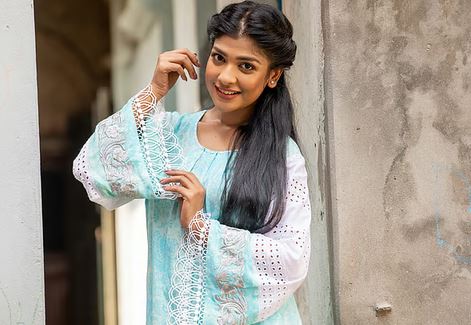Until the 18th century, lace was made by hand. Craftsmen would spend days and days weaving one yard of lace. That is why the price was high, which was beyond the reach of the common man.
In 13th-century Europe, both the elegance and price of clothing were enhanced by the craftsmanship of thread. Those who wove cloth would create various designs of embroidery on the cloth with needles and threads. The clothes of royal and noble men and women were made from that cloth. Craftsmen would run needles and threads on the cloth that was left over from the hand-weaving. The pieces of cloth would have wonderful designs. So beautiful that they would not want to throw them away. They would cleverly sew them together on the sleeves or hems of the clothes. The clothes would become more magnificent. Initially, it was called a tie or bond because it was attached to the cloth. Later, the name changed to ‘lace’.
In the 16th and 17th centuries, lace became a symbol of power in clothing. The collars, cuffs, sleeves, and veils of the clothes of kings and queens were full of lace. Until the 18th century, lace was made by hand. Craftsmen would spend days and days weaving one yard of lace. Therefore, the price was high, which was beyond the reach of the common people. Despite the laborious work, lace was made by women in rural areas, even children. They kept the designs and patterns of lace secret under strict rules. They would pass on all the unique designs to the next generation.
In the 19th century, after the Industrial Revolution, merchants started making lace by machine. This accessory immediately lost its nobility. The price decreased, and it was added to the clothes of the common people. Let’s now learn about some types of lace—
Chantilly lace
A delicate floral design lace on a net made of black silk thread. It was very popular for shawls and evening gowns in the 18th and 19th centuries. Chantilly lace originated in France in the 17th century. It is named after the town of Chantilly, near Paris. Josephine, wife of Emperor Napoleon, was very fond of this lace, which increased its popularity. Now this lace is also being made with other colors of yarn.
Alonso Lace
Another name is the ‘Queen of Lace’. The special feature of this lace, woven with fine needle and thread, is the decoration surrounded by high cords, called cordon. This lace originated in the city of Alonso, France, in the 17th century. In 1665, King Louis XIV granted it royal recognition. It was in great demand throughout Europe in the 17th century. The luxury export item was used by aristocratic society and religious leaders. The technique of making authentic handmade Alonso lace has been recognized by UNESCO as an invaluable cultural heritage.
Venetian Lace
This lace originated in Venice, Italy, in the late 16th century. This lace, heavy with dense thread work, has a 3D or three-dimensional feel. In the 17th century, this lace was highly valued throughout Europe. It was used in the clothing of the elite and clergy. It was also exported as a luxury commercial product.
Bobbin Lace
This light and delicate lace was made by winding yarn on a small stick or bobbin and winding it in a special way on a soft pillow. It originated in Flanders (present-day Belgium) and Italy in the 16th century. In Belgium, bobbin lace became such a big industry that a tax was imposed on the makers. Girls were trained to make this lace from an early age.
Irish Crochet Lace
This lace, made with fine crochet hooks, imitates the design of Venetian lace. It was usually made with designs of roses, flowers or leaves and joined together like a net. Irish crochet lace originated in Ireland in the 19th century. It became an important cottage industry in Ireland during the Great Famine of the 1840s. Women and children made it for a living. The lace pieces were widely exported abroad.
Guipure lace
Originated in France and Italy in the 16th century. The designs are not on the net; rather, they are woven into a rope or skein. This lace is now machine-made; it has a visible, coarse texture, which is popular in Western wedding dresses.
Get real time update about this post category directly on your device, subscribe now.
